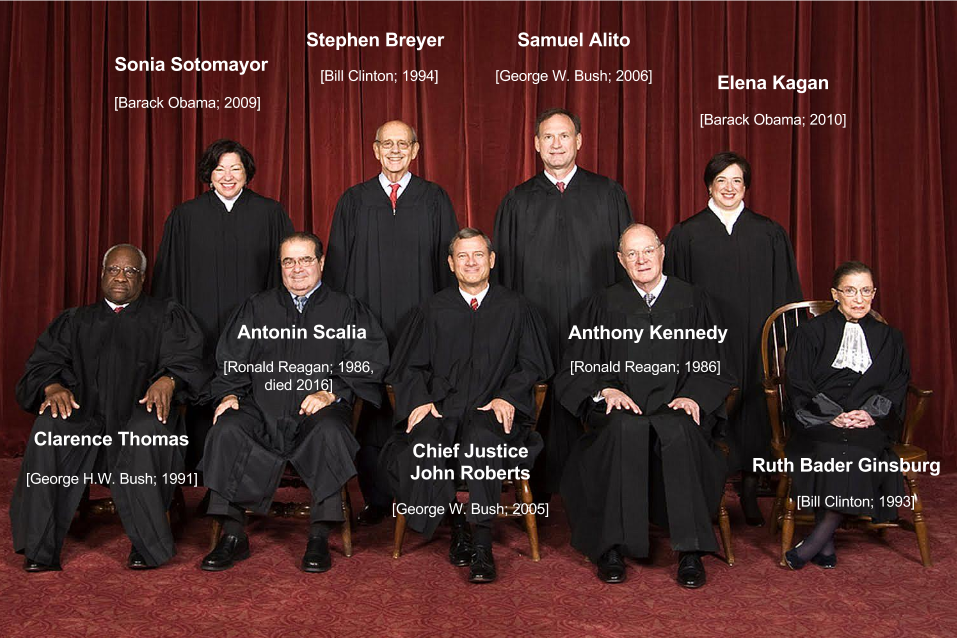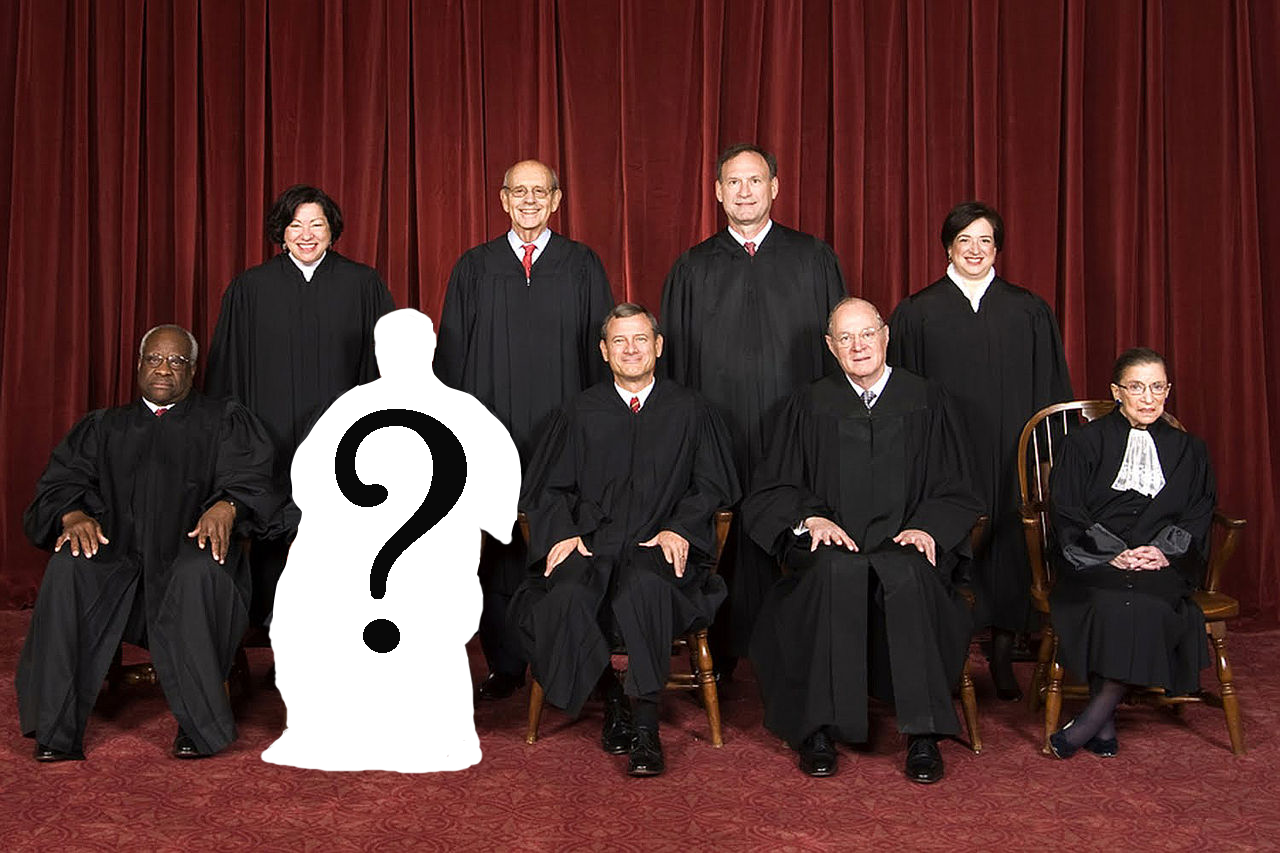What happens now?
It's the president's constitutional responsibility to nominate a new justice to fill an open seat, and Obama quickly made clear his intention to do so. On March 16, he announced the nomination of Merrick Garland, a centrist appeals court judge, who now faces a daunting Senate confirmation process.
Under the "normal" confirmation process, the president’s nominee testifies before the Senate Judiciary Committee, which decides whether to give the go-ahead for the vote to proceed to the full Senate. If the Senate votes affirmatively, the president can formally appoint the nominee to the court.
Interestingly, Scalia was unanimously confirmed by the Senate after his nomination in 1986. But the nominating process is now far more politically fraught, especially with a Democratic president and Republican controlled Congress. And this being an election year, and Obama’s final stint in office, Senate Republicans argue that such a consequential decision should be made by the next president.
“The American people should have a voice in the selection of their next Supreme Court Justice,” Senate Majority Leader Mitch McConnell (R-Ky) told reporters soon after news broke of Scalia’s death. “Therefore, this vacancy should not be filled until we have a new president.”
McConnell and Senate Judiciary Committee Chairman Chuck Grassley (R-Iowa) have since refused to hold any hearings or a vote for Obama's nominee.
Can they really do that?
Technically, yes. The Constitution dictates that Supreme Court nominees must be confirmed by the Senate. And a recent letter from Republican members of the Senate Judiciary Committee makes an effort to justify their intent to block Obama's nominee: “Not since 1932 has the Senate confirmed in a presidential election year a Supreme Court nominee to a vacancy arising in that year.”
However, thwarting the nomination process until Obama leaves office, nearly a year from now, would also be unprecedented. The Senate has never taken more than 125 days to vote on a nominee, and the average length of time from nomination to confirmation vote is 25 days.
Why is this particular nomination such a big deal?
Although the judiciary is intended to be a non-partisan branch of government, the reality is otherwise. The Supreme Court is sharply divided along partisan lines. Of the eight remaining justices, four lean pretty consistently to the right (John Roberts, Samuel Alito and Clarence Thomas and, to a slightly less predictable extent, Anthony Kennedy), and the other four, pretty consistently to the left (Ruth Bader Ginsburg, Elena Kagan, Sonia Sotomayor and Stephen Breyer). Scalia was a reliable vote for conservative causes, one of the five justices who tipped the balance of the court to the right. Obama’s nominee could presumably shift the balance back to the left.
Additionally, we’re talking about a lifetime appointment here. That's some serious job security, and it means that whoever gets the Supreme Court gig will likely be there for quite some time - until he or she decides to retire or, well, dies. Say Obama nominates a 50-year-old to the court: if appointed, that justice may well remain for the next 30 or 40 years, impacting national affairs long after Obama is out of the limelight.
https://youtu.be/4CAtUs-PI4c
Do presidents always pick nominees who share their politics?
Usually (wouldn’t you?). There are, however, some notable exceptions, including justices who have shifted positions during their time on the court, much to the chagrin of the presidents they were appointed by.
President Dwight Eisenhower, for instance, once referred to his appointment of Chief Justice Earl Warren as “the biggest damn fool mistake I ever made."
So is this court's political divide all that unusual?
To some extent, yes. Although most judges aren't elected or considered "politicians," you'd be hard pressed to find a judge whose legal decisions aren't influenced by his or her political beliefs. As such, there have always been partisan divides on the Supreme Court. But in recent years, this political polarization has intensified.
A William and Mary Law School study found that since 1990 there has been a “dramatic increase in the ideological gap between Democratic and Republican appointees.” As a result, it notes, “presidential elections will matter more to Court decision-making than they ever have in this nation’s history.”

The divide extends to the justice’s law clerks, who play a crucial role in both selecting the cases the court chooses to hear and influencing the justices in their rulings. Justices have historically sought clerks who, to some extent, reflect a range of political views. As the New York Times reported in 2010: “These days the more conservative justices are much more likely than were their predecessors to hire clerks who worked for judges appointed by Republicans. And the more liberal justices are more likely than in the past to hire from judges appointed by Democrats.”
What are the big cases this term, and how do they get decided with only eight justices?
Last week, the court heard a major case on the legality of a restrictive Texas abortion law, a decision that's expected to be closely divided. If it comes down to a 4-4 split, the Texas law remains in effect. The court will also hear controversial cases on affirmative action, labor unions and the legality of Obama’s executive order that shields some undocumented immigrants from deportation. (See the complete list of cases here.)
The court will continues to hear its scheduled docket of cases. If there is a 4-to-4 vote on any decision, then the the lower court’s ruling stands.
But with only eight justices on hand, some of these cases likely won't be decided as originally anticipated. In late February, for instance, the Dow Chemical company, which had banked on Scalia's support, quickly decided to settle a case it was scheduled to argue before the court, fearing a likely 4-4 split (which would default to the lower court's decision against the company).
Who can be a Supreme Court justice?
Anyone! The Constitution doesn’t actually spell out any guidelines on age or education-level (although you wouldn’t know it looking at the resumes of the current justices, all of whom attended law school at either Harvard or Yale). Nominees don't need to have judicial experience. Heck, they don't even need law degrees. And unlike the presidency, there is no requirement to be a “natural-born” citizen. In fact, foreign-born justices have been appointed six times throughout the court’s history.
Even former president's can be on the court: President William Howard Taft was appointed Chief Justice in 1921, nearly a decade after his presidency.
So maybe a Justice Obama someday? I wouldn't hold your breath.
How many cases does the court hear each year, and how does it decide which ones to take?
Again, much of the work is done by law clerks. Each term, they pour through upwards of 8,000 requests, called a petition for a writ of certiorari (or a "cert. petition"). These are brought by the petitioners, who have already exhausted all appeals in federal and state courts.
Except in very rare occasions, the court only considers cases that have gone up the judicial system food chain. The Supreme Court is the highest court in the land, the final step on the legal ladder. It's decision is law, one that can't be appealed to any other court. (For a more throughout procedural overview, see the SCOTUS Blog.)
The clerks recommend which appeals their justices should consider or overlook, and the justices then vote. Four of nine justices have to agree to take a case and hear oral arguments. This is called “granting ceriorari.”
Only a tiny percentage of those thousands of appeals actually see the light of day. The court now accepts about 80 cases a term, hearing oral arguments between October and April. In that respect, the court's less publicized decision to NOT a hear a case is often quite consequential.
The petitioner and respondent usually appear in court for an hour-long session, during which they're pelted with questions from the nine justices (although Justice Clarence Thomas very rarely utters a word).
The justices then meet privately to vote on the decision. Unless the decision is unanimous, a justice from either side is selected to write the majority and dissenting opinions. Later in the term, the court announces -- or “hands down” -- its decision.

